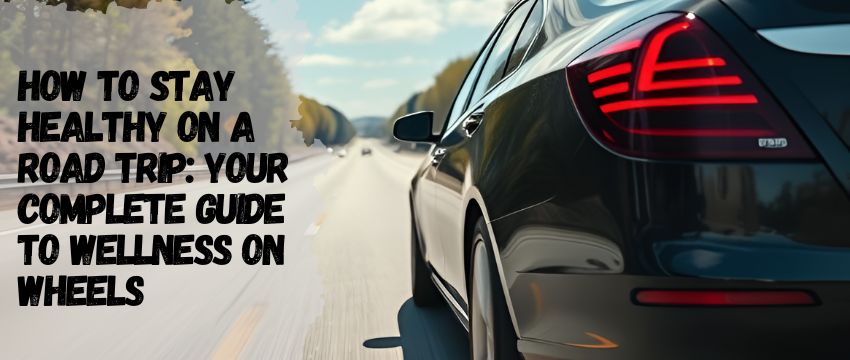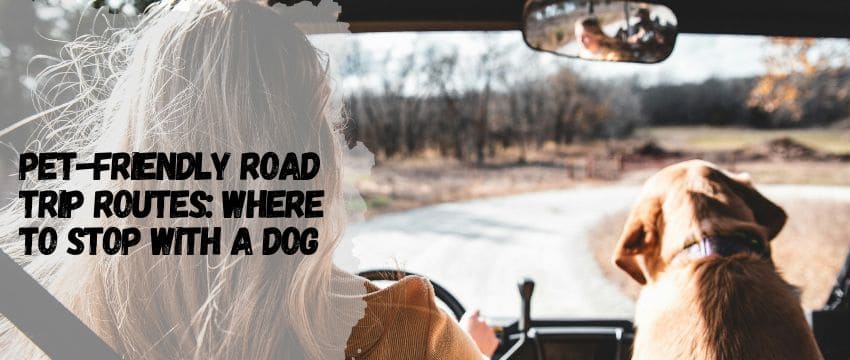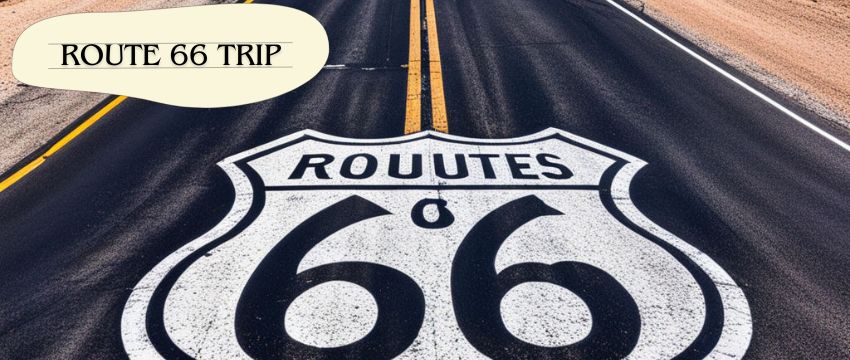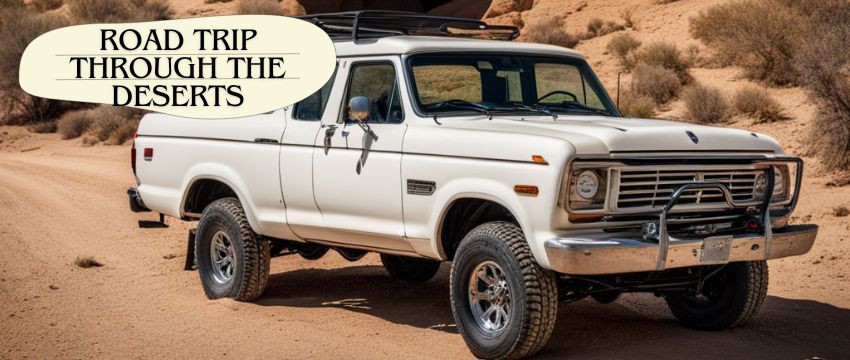Introduction: The Road to Health Isn’t Just a Metaphor
Road trips are synonymous with freedom, adventure, and the joy of the open road. But between gas station snacks, endless hours of sitting, and erratic sleep schedules, maintaining your health can feel like an uphill battle. However, with intentional planning and mindful habits, you can prioritize wellness without sacrificing the thrill of exploration. This guide dives into practical strategies for staying physically, mentally, and emotionally healthy on a road trip, whether you’re cruising the Pacific Coast Highway or navigating the backroads of Appalachia. Let’s redefine road-tripping as a journey that fuels both wanderlust and well-being.
1. Pre-Trip Preparation: Laying the Groundwork for Success
A healthy road trip starts long before you turn the ignition. Begin by crafting a wellness-centric plan that addresses nutrition, movement, and mental resilience.
Meal Planning: Beyond Beef Jerky and Chips
Resist the temptation to rely on convenience-store junk. Instead, pack a cooler with balanced meals and snacks:
- Proteins: Hard-boiled eggs, grilled chicken strips, or hummus cups.
- Fiber-Rich Carbs: Whole-grain wraps, pre-cut veggies, or quinoa salads.
- Hydration: Reusable water bottles and electrolyte tablets to combat dehydration.
Invest in portable storage like bento boxes to keep portions organized. For longer trips, research grocery stores along your route (e.g., Trader Joe’s or local co-ops) to restock fresh produce.
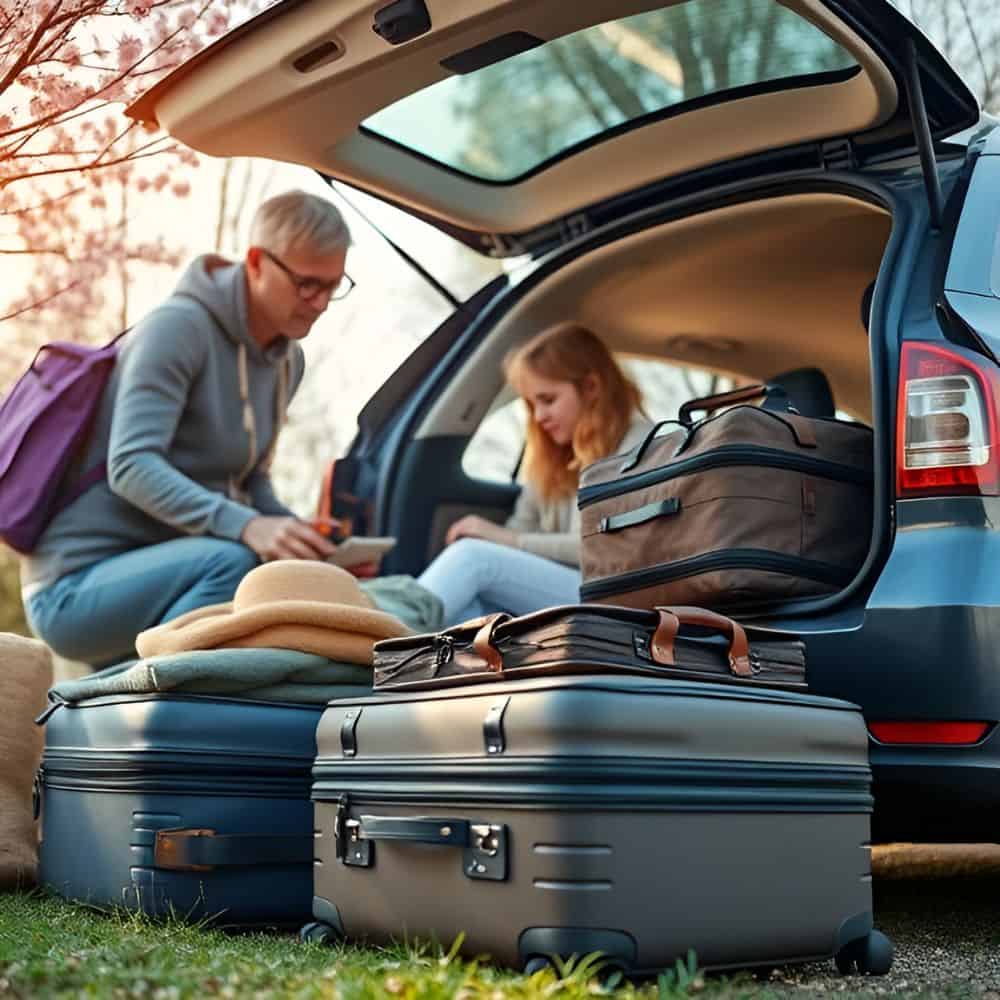
Exercise Prep: Mobility Tools and Space-Saving Gear
Sitting for hours tightens muscles and slows circulation. Combat stiffness by packing:
- Resistance Bands: Perfect for calf raises or shoulder stretches at rest stops.
- Collapsible Yoga Mat: Use for quick routines in parks or hotel rooms.
- Foot Roller: Massage plantar fascia during gas station breaks.
Mental Health Toolkit
Long drives can test patience. Preload playlists with calming music, guided meditations, or podcasts on mindfulness. Apps like Headspace offer short sessions tailored for travelers.
2. Nutrition on the Go: Eating Well Without the Guilt
Smart Snacking: Fueling Your Body, Not Just Your Cravings
Swap sugary snacks for nutrient-dense alternatives:
- Trail Mix: DIY blends with almonds, dark chocolate, and dried apricots.
- Fresh Fruit: Apples and oranges travel well; freeze grapes for a cool treat.
- Protein Bars: Opt for low-sugar options like RXBAR or KIND.
Dining Out: Navigating Restaurants and Drive-Thrus
When stopping for meals, prioritize:
- Grilled Over Fried: Choose grilled chicken sandwiches instead of burgers.
- Vegetable Sides: Substitute fries with salads or steamed veggies.
- Portion Control: Split meals with a travel partner to avoid overeating.
Hydration Hacks
Dehydration causes fatigue and headaches. Set a goal to drink 8 oz of water every hour. Infuse water with lemon or mint for flavor. Avoid excessive caffeine, which leads to energy crashes.
3. Staying Active: Movement in Small Spaces
Rest Stop Workouts: Turning Parking Lots into Gyms
Turn breaks into mini fitness sessions:
- Stair Climbs: Use rest area stairs for cardio.
- Trunk-Assisted Stretches: Forward folds using the car bumper.
- Parking Lot Walks: Pace for 10 minutes to boost circulation.
In-Car Exercises
Even while buckled, you can:
- Isometric Contractions: Tighten and release core muscles.
- Neck Rolls: Relieve tension from hours of driving.
- Ankle Pumps: Prevent blood clots by flexing feet.
Explore Active Destinations
Plan stops at hiking trails (e.g., Sedona’s Bell Rock) or bike rentals (e.g., Minneapolis’ Chain of Lakes). Many national parks offer short, scenic walks like Zion’s Riverside Trail.
4. Mental Wellness: Keeping Stress at Bay
Mindful Driving Techniques
Combat road rage and fatigue with:
- Deep Breathing: Inhale for 4 seconds, exhale for 6.
- Gratitude Practice: Reflect on three positive moments each hour.
- Audiobook Escapes: Lose yourself in a novel to reduce mental fatigue.
Digital Detox Zones
Designate stretches of the drive as screen-free time. Use this to connect with travel companions or enjoy the scenery.
Sleep Prioritization
Poor sleep exacerbates stress. Stick to a consistent sleep schedule, even in hotels. Pack a travel pillow and eye mask to improve rest quality.
5. Hygiene and Immune Support
Sanitization on the Road
Germs thrive in cars. Keep disinfectant wipes in the glove compartment to clean steering wheels, gear shifts, and door handles. Use hand sanitizer after rest stops.
Immune-Boosting Supplements
Fortify your system with:
- Vitamin C: Reduces cold risk during weather changes.
- Zinc Lozenges: Combat sore throats.
- Probiotics: Support gut health disrupted by travel.
Clean Eating Amid Chaos
If fast food is unavoidable, opt for chains with healthier menus, like Panera (broth bowls) or Chipotle (salad bowls with lean protein).
6. Emotional Balance: Nurturing Connections
Travel Companions: Managing Group Dynamics
Set boundaries to prevent conflicts:
- Quiet Hours: Agree on times for music or conversation.
- Shared Responsibilities: Rotate driving and navigation duties.
- Check-Ins: Discuss energy levels and needs openly.
Solo Travel: Staying Centered Alone
Solo trips require extra self-care:
- Journaling: Process experiences through writing.
- Podcast Companionship: Listen to storytelling podcasts for a sense of connection.
- Safe Socializing: Chat with locals at cafés to avoid isolation.
Road Trip Wellness Essentials
Category | Tools & Strategies |
|---|---|
Nutrition | Cooler meals, DIY trail mix, reusable water bottles, electrolyte tablets. |
Exercise | Resistance bands, yoga mat, rest stop workouts, hiking detours. |
Mental Health | Mindfulness apps, digital detox zones, gratitude journaling. |
Hygiene | Disinfectant wipes, hand sanitizer, immune supplements. |
Sleep | Travel pillow, eye mask, consistent sleep schedule. |
Connection | Group check-ins, solo journaling, audiobooks. |
Conclusion: The Journey Is the Destination
A road trip doesn’t have to derail your health. By prioritizing mindful eating, movement, and mental well-being, you’ll arrive at your destination feeling rejuvenated—not drained. Let the open road inspire not just adventure, but a deeper commitment to self-care.

FAQs
1. What is the least visited state for vacation?
North Dakota is the least visited state, offering serene landscapes like Theodore Roosevelt National Park and the Enchanted Highway’s giant sculptures. Its lack of crowds provides solitude for nature lovers. Visitors can explore Scandinavian heritage in towns like Bismarck or stargaze in the pristine Badlands. Affordable lodging and untouched trails make it a hidden gem.
2. What is the best time to go on a road trip?
Spring (April–June) and fall (September–October) are ideal for mild weather and scenic beauty. Avoid summer crowds in national parks and winter road closures. Spring offers wildflowers, while fall dazzles with foliage. Shoulder seasons also mean lower accommodation prices and easier reservations.
3. How long should a road trip take?
A road trip’s length depends on distance and stops. For cross-country routes (e.g., NYC to LA), plan 7–10 days to enjoy landmarks. Shorter trips (500 miles) can be done in 2–3 days with strategic driving blocks. Always add a 20% time buffer for spontaneity and delays.
4. What is the safest time to drive on the highway?
Weekday mornings (5–7 AM) are safest due to low traffic and alert drivers. Avoid late nights (12–4 AM) when drowsy or impaired drivers are common. Clear weather in spring/fall reduces risks compared to winter storms or summer downpours.
5. Is it a good idea to go on a road trip?
Yes! Road trips offer flexibility, cost savings, and unique experiences. They foster bonding and allow spontaneous detours to hidden gems. With proper planning for health and safety, road trips create lifelong memories and a deeper connection to landscapes.
Pack your resilience, hit the road, and prove that adventure and wellness can ride shotgun together. 🚗💚
Our team is creating outdoor-gear relevant articles with passion. If our articles can help you to find the correct solutions for your questions, we will be happy about that. In the content creation process, we usually collect accurate and useful information online or offline to compile our content in an organized way. Consequently, we can guarantee that you can discover some expected answers to your questions. We appreciate your time on our site.

